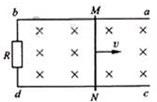阅读理解。
I was wondering when it would happen. As everyone who lives in London and other cities
around Britain will know, urban foxes are now commonplace. I recently saw one in the middle
of the day, wandering along a street in Pimlico. Twenty years ago, that sight would have stopped
the traffic. Now, it is barely worth a remark. Foxes are large animals, as big as many dogs. Of
course, as in the terrifying incident at Homerton, one would attack a baby sooner or later.
Actually, this has already happened. In 2002, at Dartford in Kent, a fox bit a 14-week-old boy
in the living room of the family home while his mother was sleeping. The last government preferred
to ignore the incident; it was, after all trying to ban foxhunting at the time. It could see that some folk
love urban foxes, perhaps having the same affection for wildlife as the people I have seen in London
parks feeding rats along with squirrels and ducks.
The foxites even include animal scientists, who would seem to have persuaded Bristol City
Council (whose advisory Living with Urban Foxes has been adopted by the Chartered Institute
of Environmental Health) that foxes never attack humans. But then they also deny that country foxes
target lambs, when every hill farmer I know would tell them differently. A lamb is much the same
size as a baby. It is no more difficult to get into a house than into a hen cage.
According to Living with Urban Foxes, “the fox population is stable”, and has not significantly
increased. Is this true? When I first lived in London in the late 1970s, urban foxes had an almost
mythical status. They were like yetis. You never saw one; you weren’t sure they really existed.
Now, they are part of the scene. I wouldn’t be surprised to find one. Friends in the suburbs are
plagued(困扰)with them. A study in Bristol showed that an astonishing 8 percent of pets caged
in gardens are killed by foxes each year.
Surely, if foxes are now harming babies, it is time for something to be done about them, yet this is
not as straightforward as it might seem. While country residents refer to foxes as harmful animals,
that is not how they are officially classified; this means that local authorities do not have a statutory
obligation(法定的义务)to control them. It would be an easy thing for this government to change
the legislation.
1.What is the author’s purpose in writing the passage?
A. To urge the government to control urban foxes.
B. To show how to provide food for urban foxes.
C. To protect urban foxes from traffic accidents.
D. To prove urban foxes are not dangerous as expected.
2.The underlined word “foxites” in Paragraph 3 probably refers to those who ______.
A. hate urban foxes
B. love urban foxes
C. support foxhunting
D. oppose foxhunting
3.What is the author’s attitude toward Living with Urban Foxes?
A. Support.
B. Praise.
C. Disbelief.
D. Tolerance.
4.What kind of people is the author worried about most?
A. Farmers.
B. Students.
C. Drivers.
D. Babies.

